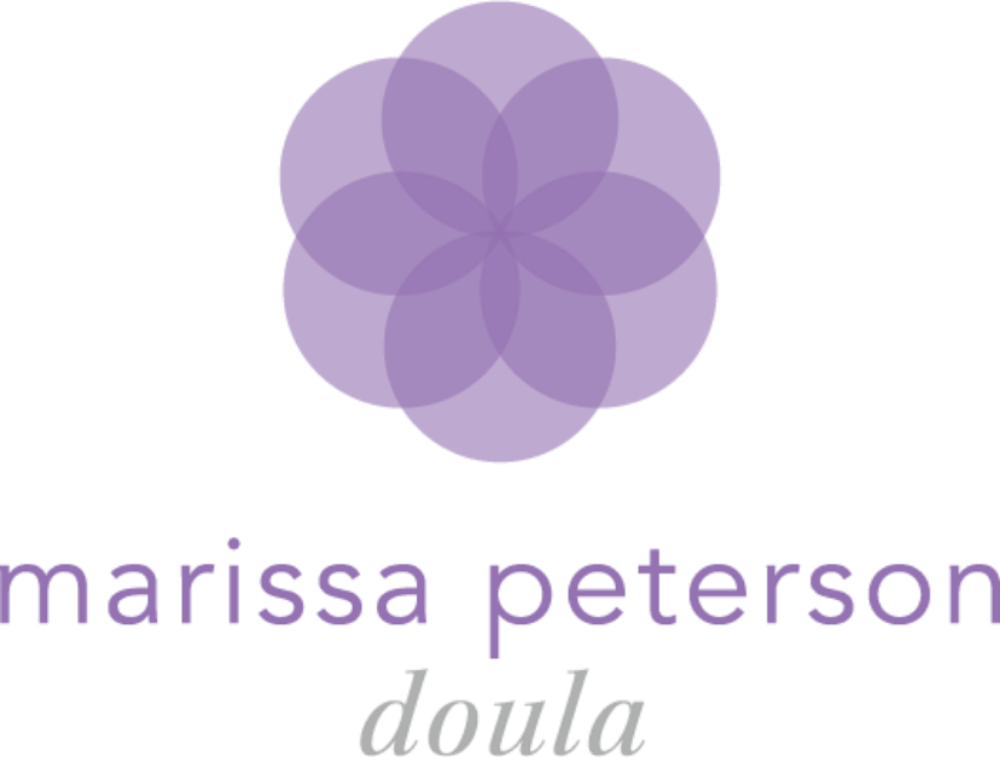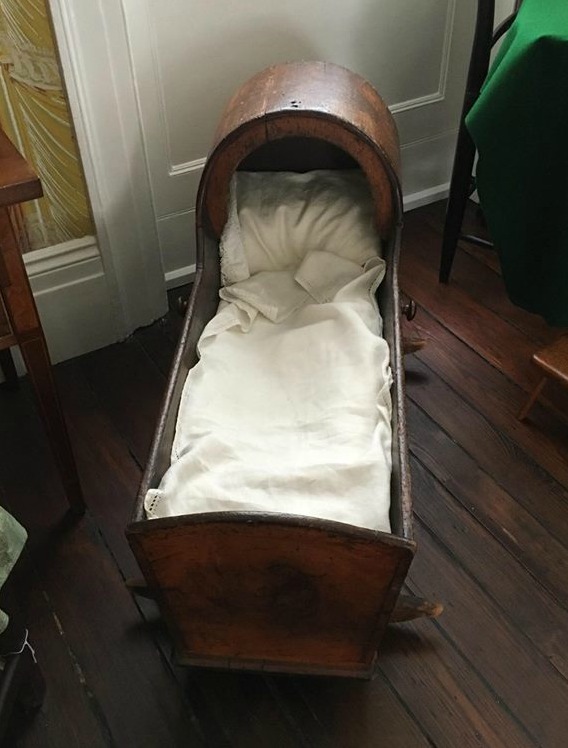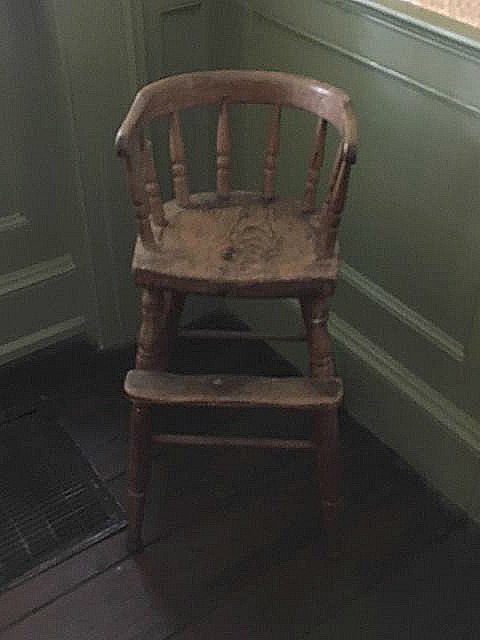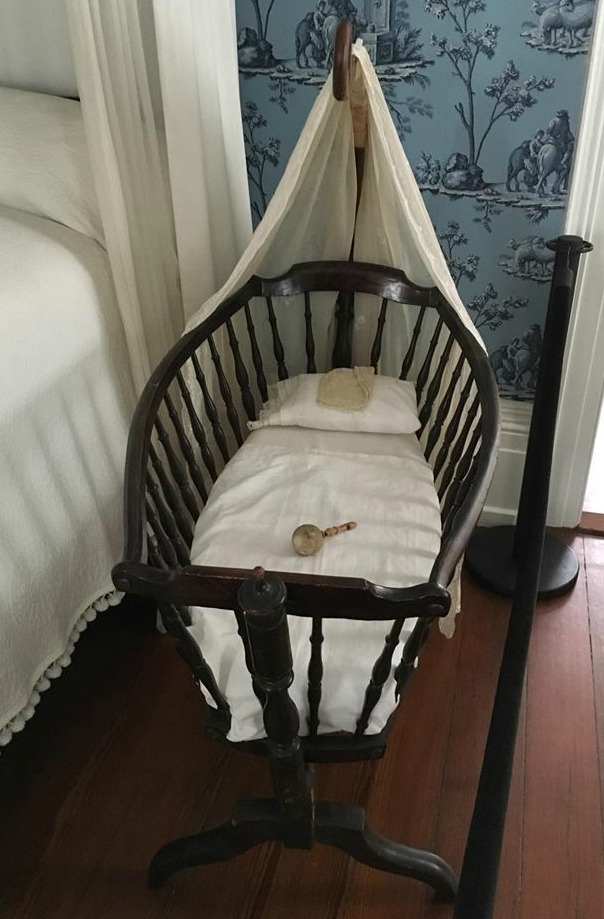I hope this post serves to soothe some anxieties, and explains how your doula can still support you in this tumultuous time. If you have any questions or concerns, please do not hesitate to contact me!
1820s Motherhood
Last week, while a friend was in from out-of-town, we were able to tour the Isaiah Davenport House here in Savannah, GA. I was immediately intrigued by this photo:
This is a silhouette of Sarah Davenport, given to her as a gift after delivering her 10th child (7 survived infancy). It was done in 1828 by a silhouette artist by the name of Master Hanks. The thing that blew me away is that this piece was made when she was one week postpartum!
This and some of the other artifacts (pictured below) made me wonder, what was it like to be a mother in the 1820s.
With further research, I have compiled some interesting tidbits about birth in the 1820s.
1. It was deadly.
If a woman were to survive the birth itself, she was susceptible to childbed fever, now known as puerperal fever. The quick-progressing symptoms of this bacterial infection of the reproductive tract consisted of extreme abdominal pain, fever, and weakness. It took many years for doctors to learn the cause of the disease, which was eventually found to be caused by the lack of sanitation at the time. Doctors would often go directly from autopsies to births, with no hand hygiene between. The idea of doctors spreading the disease was first proposed in the early 1790s by Alexander Gordon, but was not accepted until 1885. It remained a problem due to carelessness in antiseptic routine, until sulfa and penicillin were introduced as treatments in the 1930s and 40s. We also cannot neglect the fact that deliveries were much more traumatic in this time, causing more wounds and a greater opportunity for infection to set in.
If women did not succumb to the fever, there were of course other deadly complications such as postpartum hemorrhage or obstructed labor. In fact, women wrote their wills upon finding out they were pregnant. Non-deadly, but life-altering, complications also occurred. These included damage from untreated infections and venereal diseases (antibiotics were not widely used for nearly another century), uterine prolapse, and fistulas.
Cornelia Augusta, Isaiah and Sarah's ninth child, died of childbed fever in 1853 at age 29.
2. Pain relief
Ether was first used in 1847, and chloroform shortly thereafter, but obviously were not available for Sarah's births in the 1820s. These medications also made the use of forceps more common, as they made it difficult for women to push effectively.
3. Doctor or midwife?
Before the 19th century, all births were attended by midwives. In the 1820s, most births were still at home (only 5% of deliveries occured in hospitals by 1900), but began to be attended by doctors as well. Sarah most likely had a home birth with a midwife, but we can't be certain.
Sources:
http://www.davenporthousemuseum.org/
https://www.bellybelly.com.au/birth/why-women-used-to-die-during-childbirth/
https://www.fitpregnancy.com/pregnancy/labor-delivery/checkered-history-delivery-room
http://www.loyno.edu/~kchopin/new/women/bcabortion.html
Birth: The Surprising History of How We Are Born by Tina Cassidy
Lying-In: A History of Childbirth in America by Richard Wertz & Dorothy Wertz
Where You Give Birth MATTERS!
This week, I was reading the new Consumer Reports on c-section rates. To put the jumble of numbers in perspective, the World Health Organization recommends that the c-section rate should be no higher than 15%. Our current national average is 33%.
According to Consumer Reports, as of March 2017, these are the cesarean rates in our area:
Memorial Hospital- "17% of first-time mothers with low-risk deliveries had a C-section"
St. Joseph's Candler - "40% of first-time mothers with low-risk deliveries had a C-section."
Also, from The LeapFrog Group, I was able to find out the episiotomy rates.
Memorial Hospital- 2.6%
St. Joseph's Candler- 15.3%.
But these two places are not the only choice for birth in Savannah!
The Midwife Group & Birth Center reports a hospital transfer rate of 9.59% with a 4% c-section rate for 2016.
Savannah Midwifery - "GeorgAnna's transport rate (of women in labor from home to the hospital) is 5.26%, or 5 clients in 6 years. Newborn transport rate is 3.94%, or 3 in 5 years (two to the hospital, one to their Pediatrician). One Savannah Midwifery client who transported from home to hospital had a non-emergent cesarean."
Naomi & Michael Voss after her cesarean birth!
Don't get me wrong, I am glad we have c-sections. They are truly life-saving when needed. The problem is that providers are becoming more likely to recommend this procedure- a major abdominal surgery- for reasons that are not evidence based. No surgery is without risks, so the decision for a cesarean birth should always come after a risk-benefit analysis and with the family's informed consent.
C-sections are birth, and birth is beautiful.








